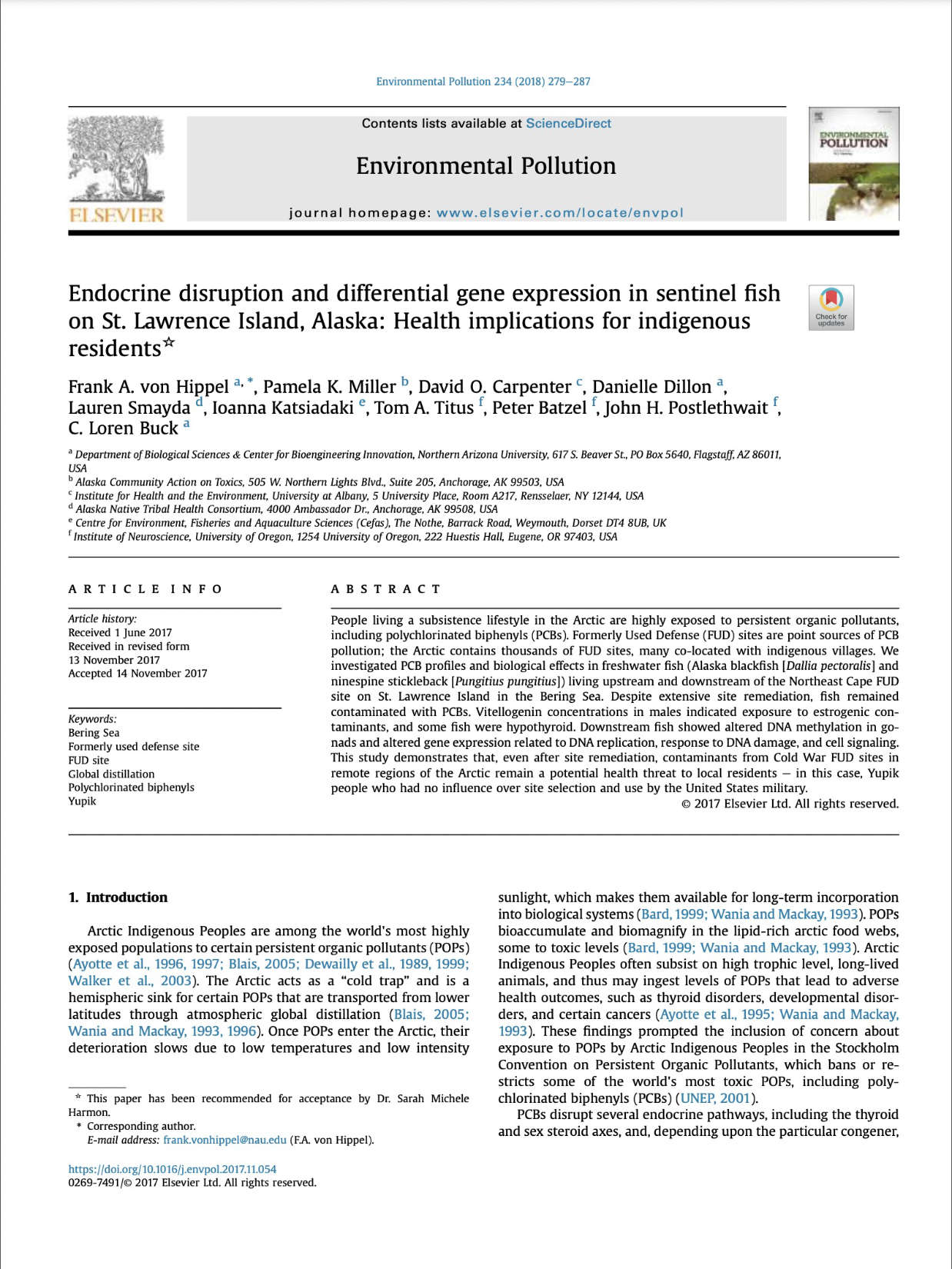Endocrine disruption and differential gene expression in sentinel fish on St. Lawrence Island, Alaska: Health implications for indigenous residents
About/Abstract
People living a subsistence lifestyle in the Arctic are highly exposed to persistent organic pollutants, including polychlorinated biphenyls (PCBs). Formerly Used Defense (FUD) sites are point sources of PCB pollution; the Arctic contains thousands of FUD sites, many co-located with indigenous villages. We investigated PCB profiles and biological effects in freshwater fish (Alaska blackfish [Dallia pectoralis] and ninespine stickleback [Pungitius pungitius]) living upstream and downstream of the Northeast Cape FUD site on St. Lawrence Island in the Bering Sea. Despite extensive site remediation, fish remained contaminated with PCBs. Vitellogenin concentrations in males indicated exposure to estrogenic contaminants, and some fish were hypothyroid. Downstream fish showed altered DNA methylation in gonads and altered gene expression related to DNA replication, response to DNA damage, and cell signaling. This study demonstrates that, even after site remediation, contaminants from Cold War FUD sites in remote regions of the Arctic remain a potential health threat to local residents e in this case, Yupik people who had no influence over site selection and use by the United States military.
Keywords/Info
- Bering Sea
- Formerly used defense site
- FUD site
- Global distillation
- Polychlorinated biphenyls
- Yupik

